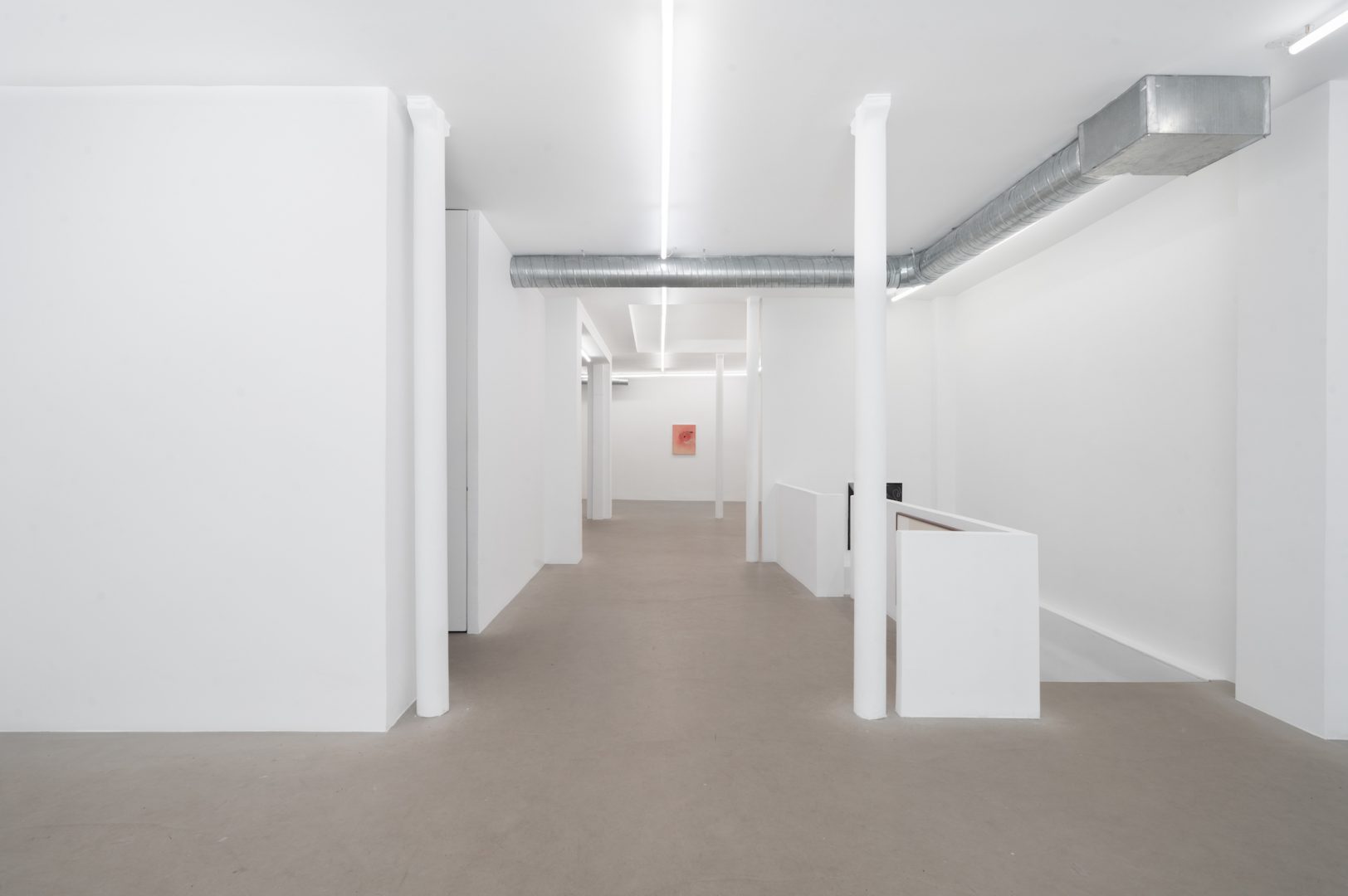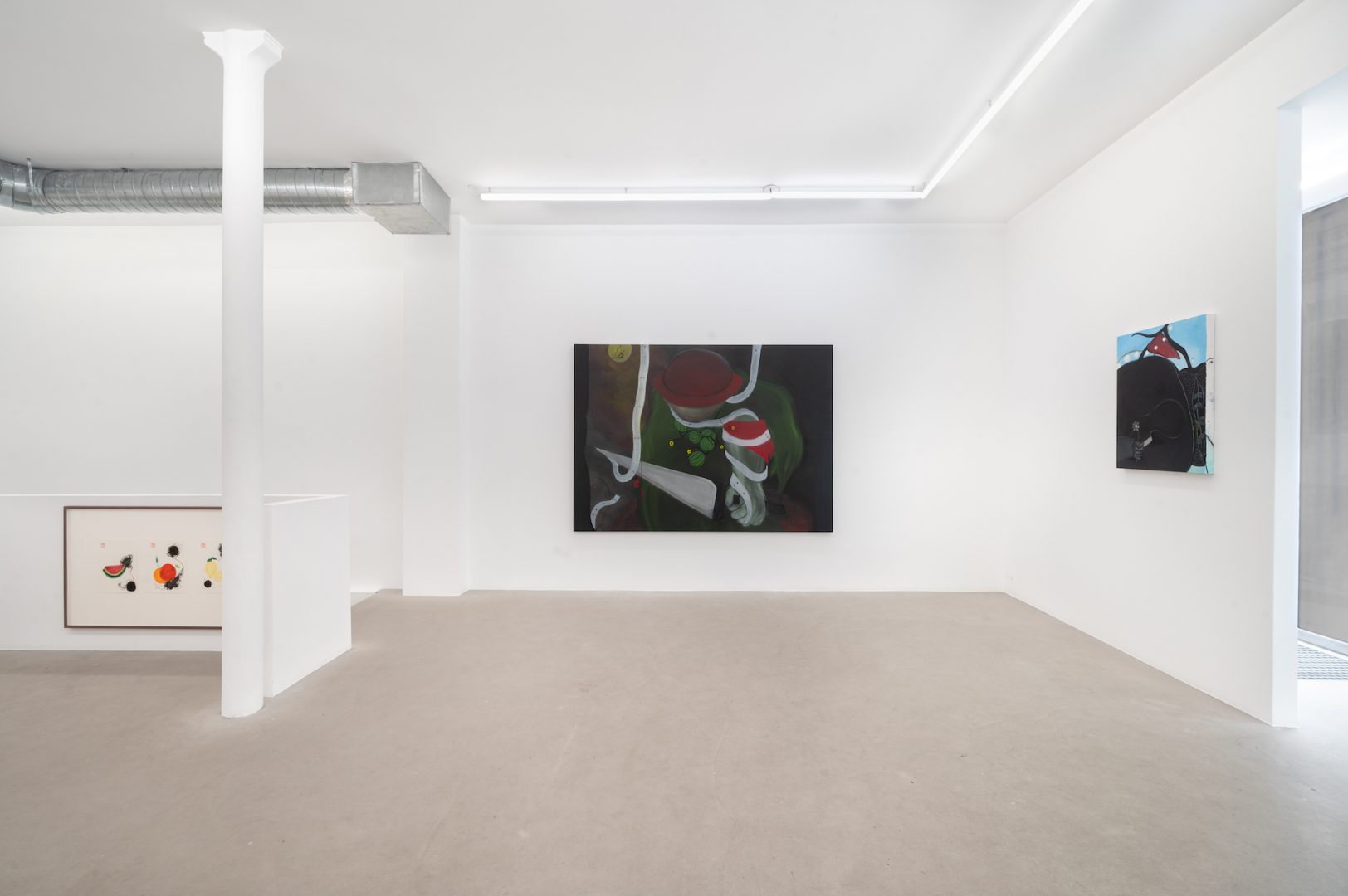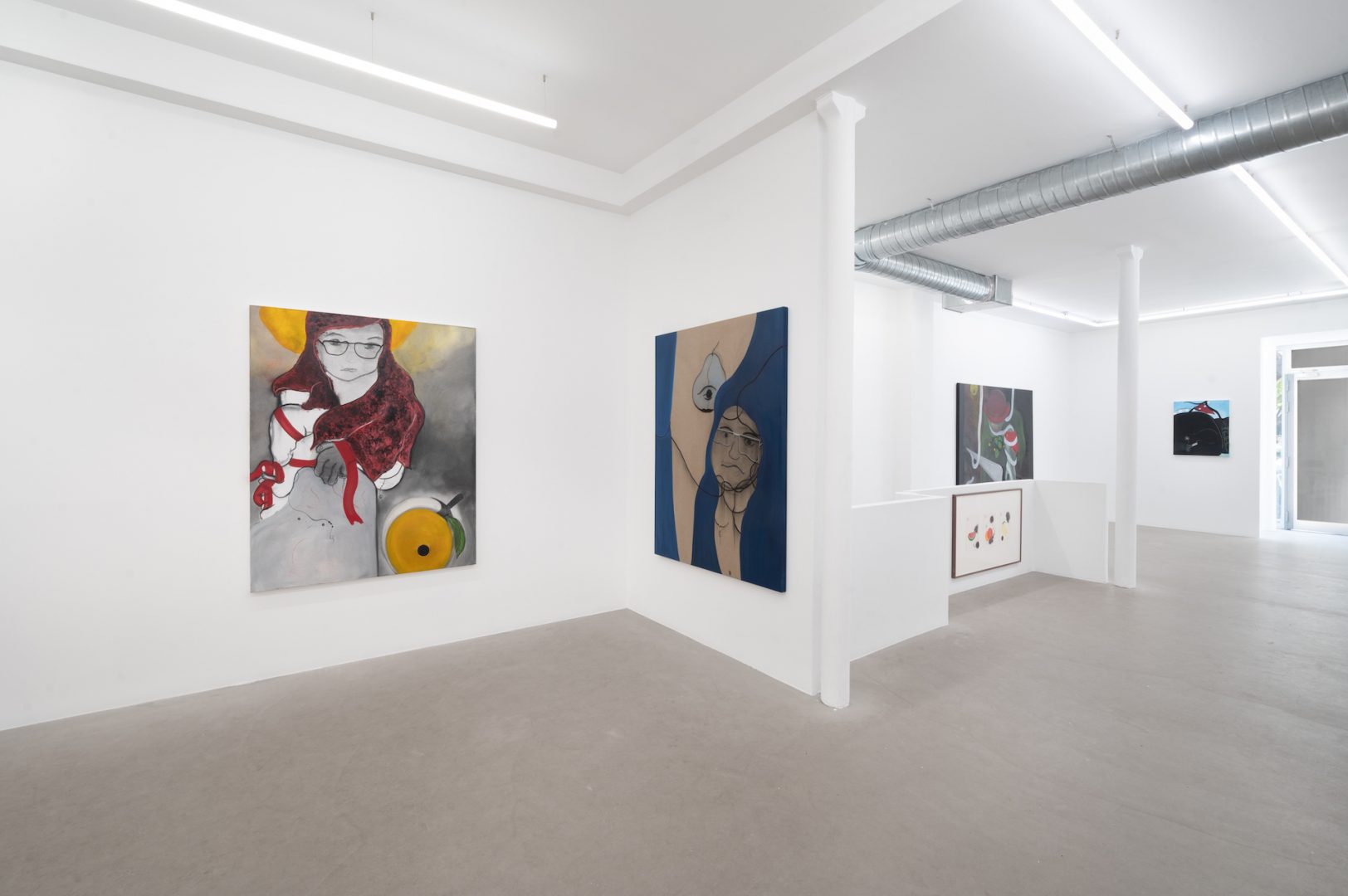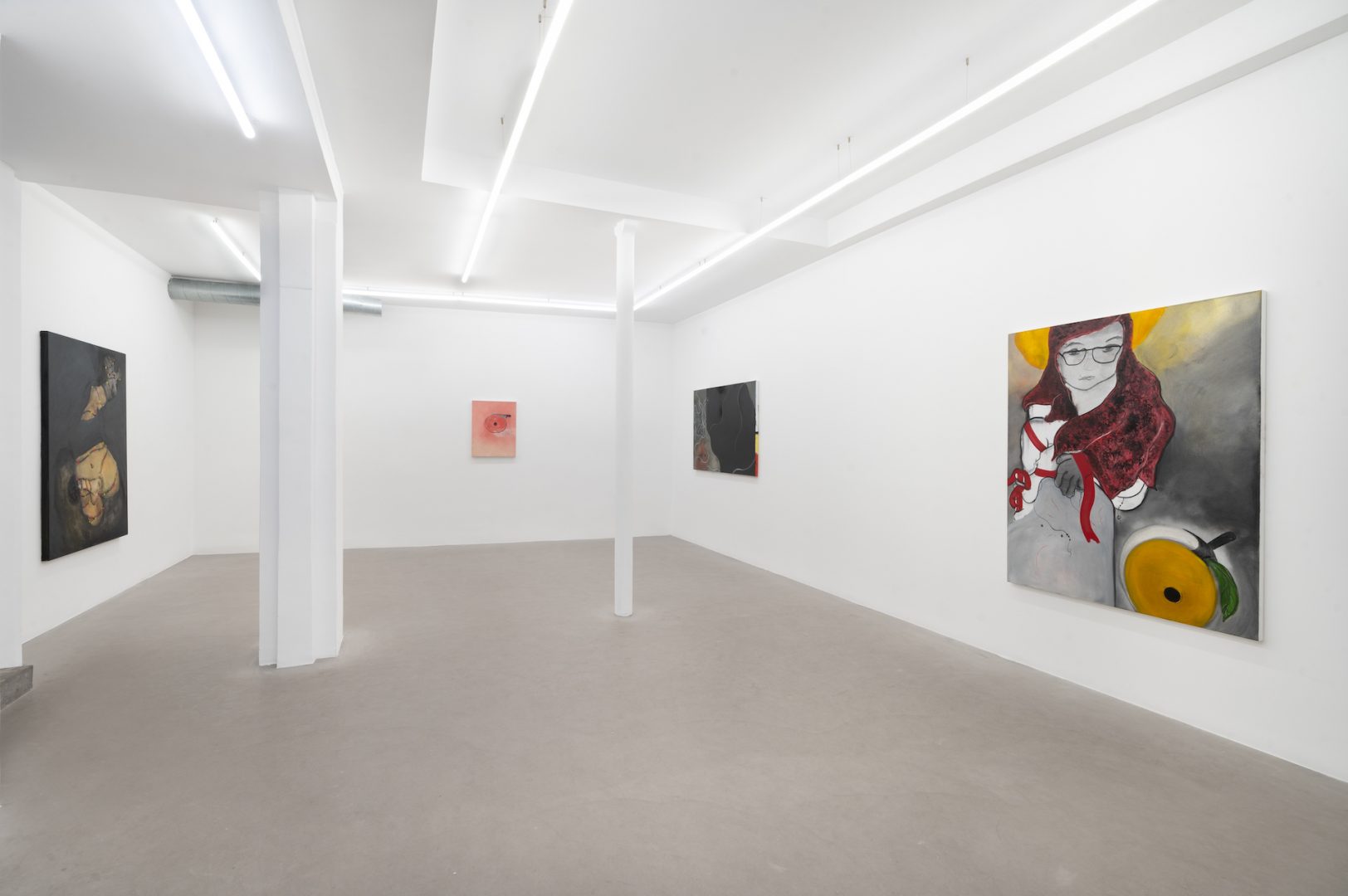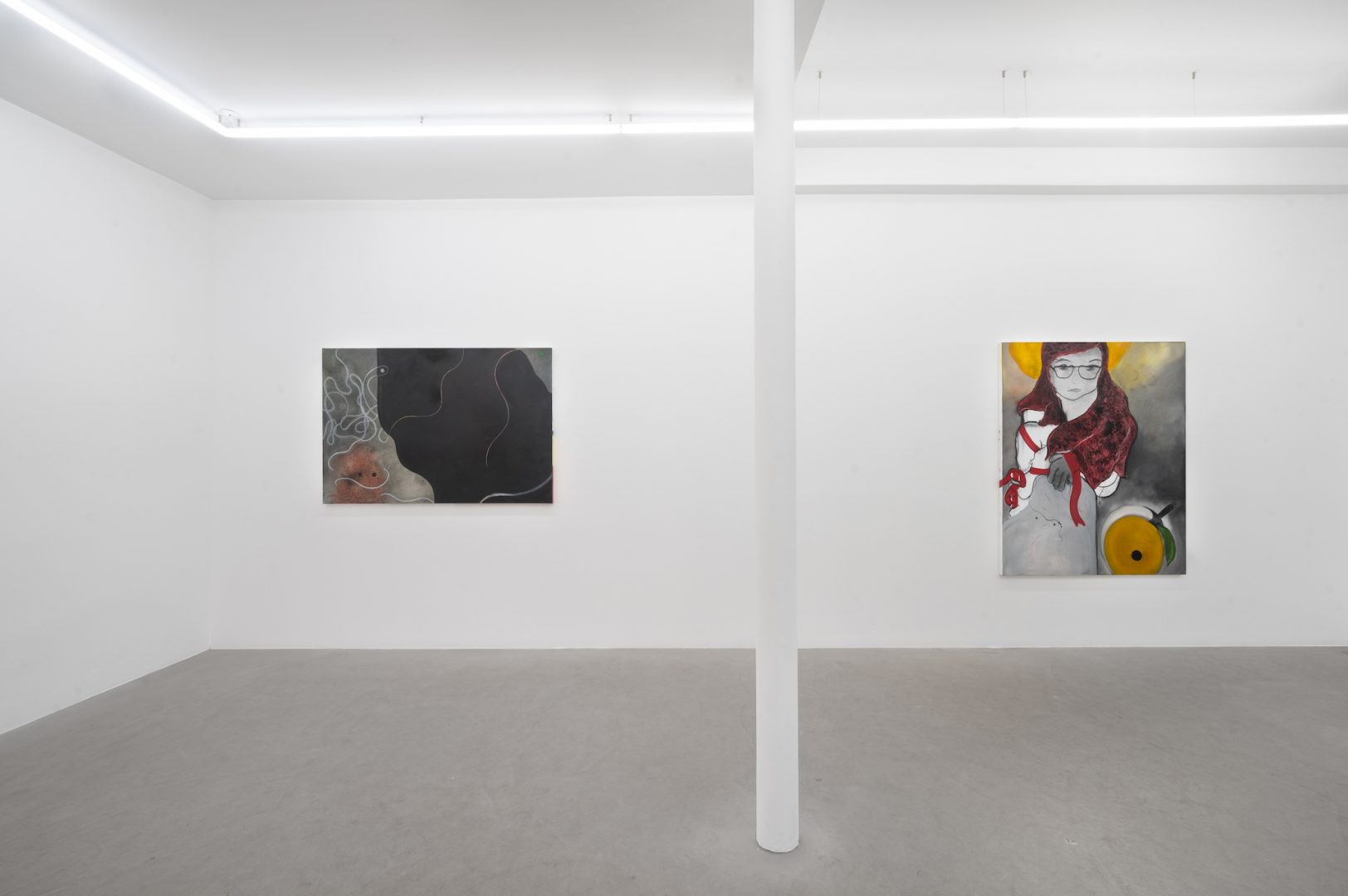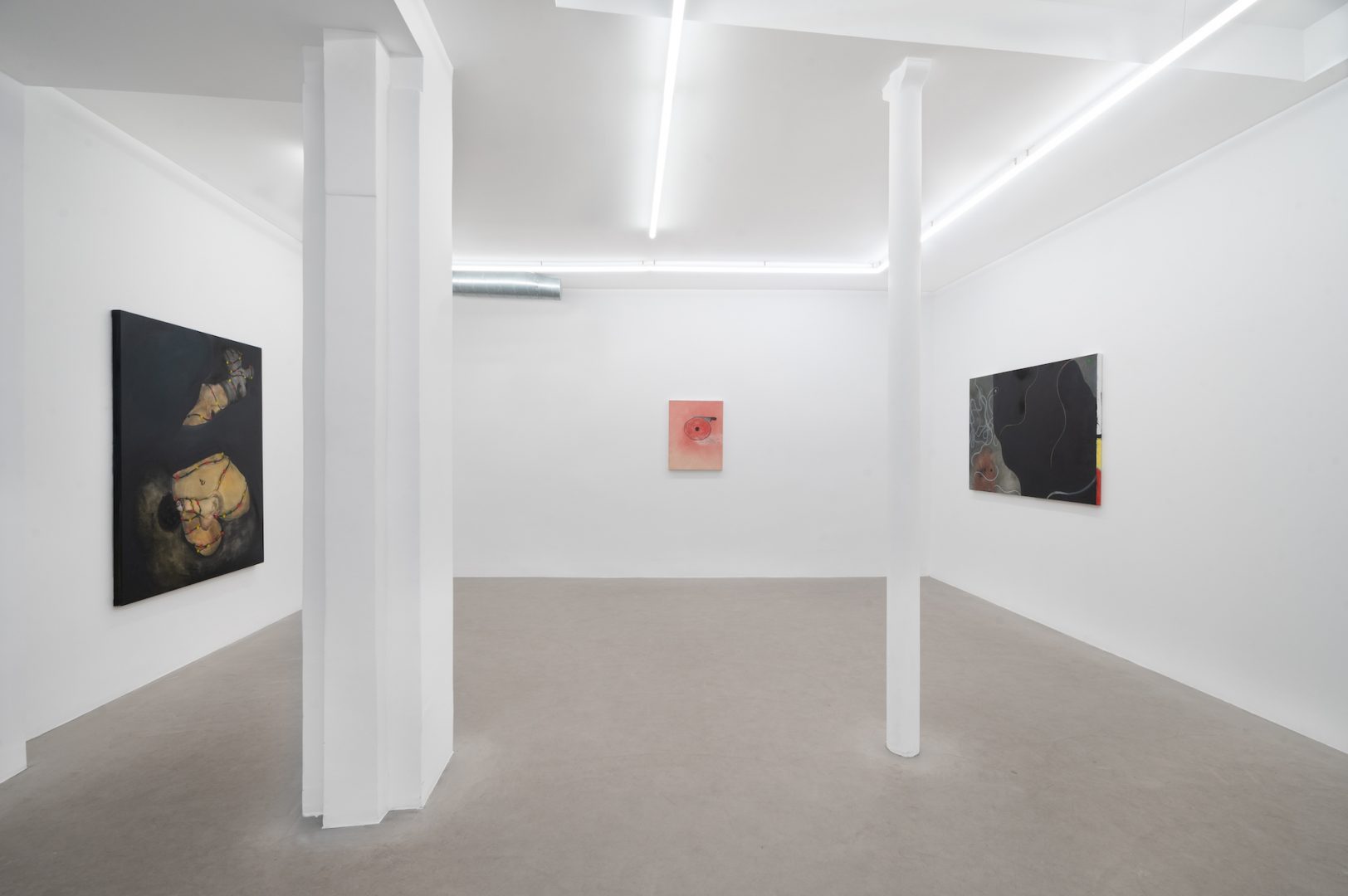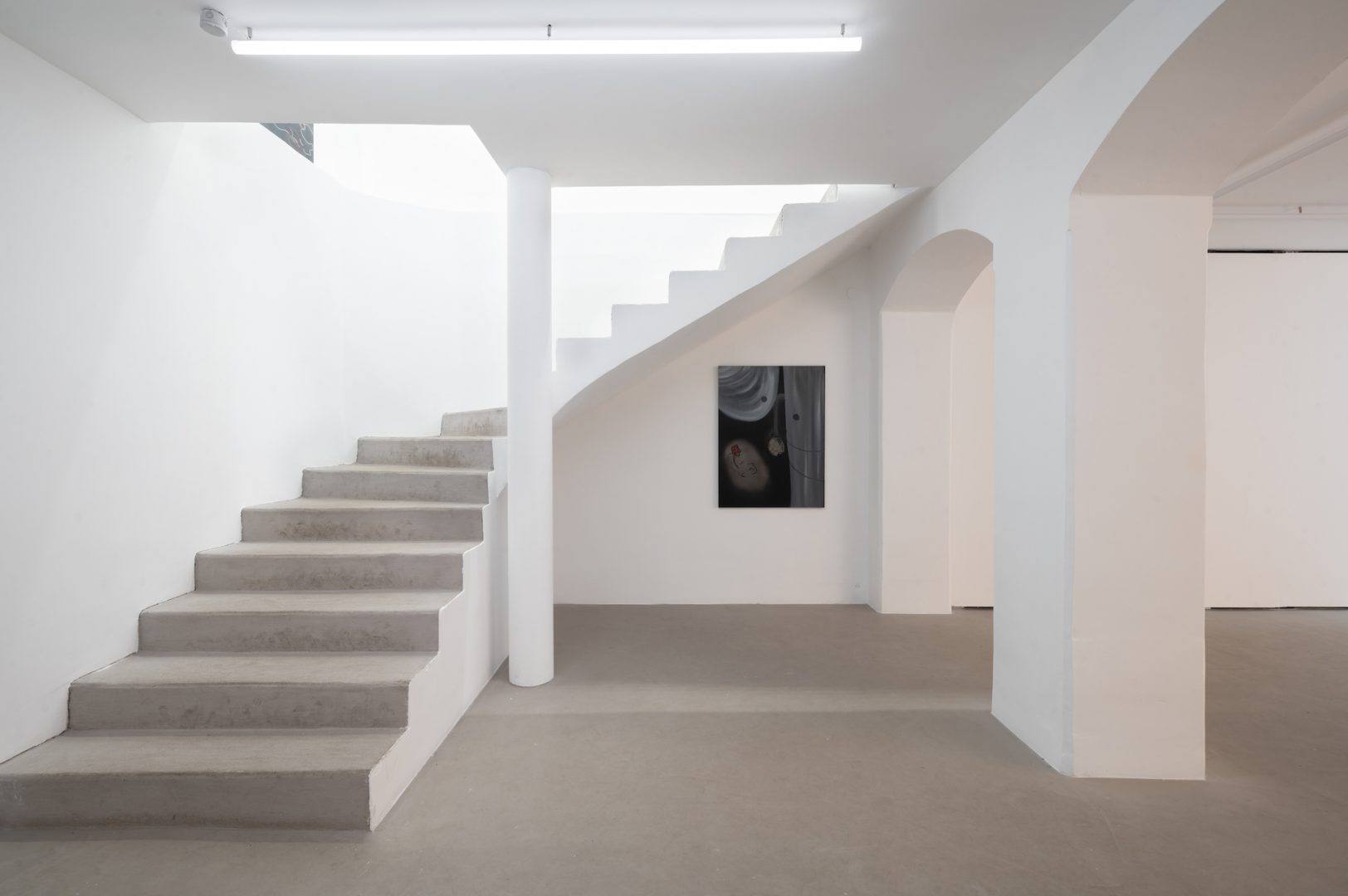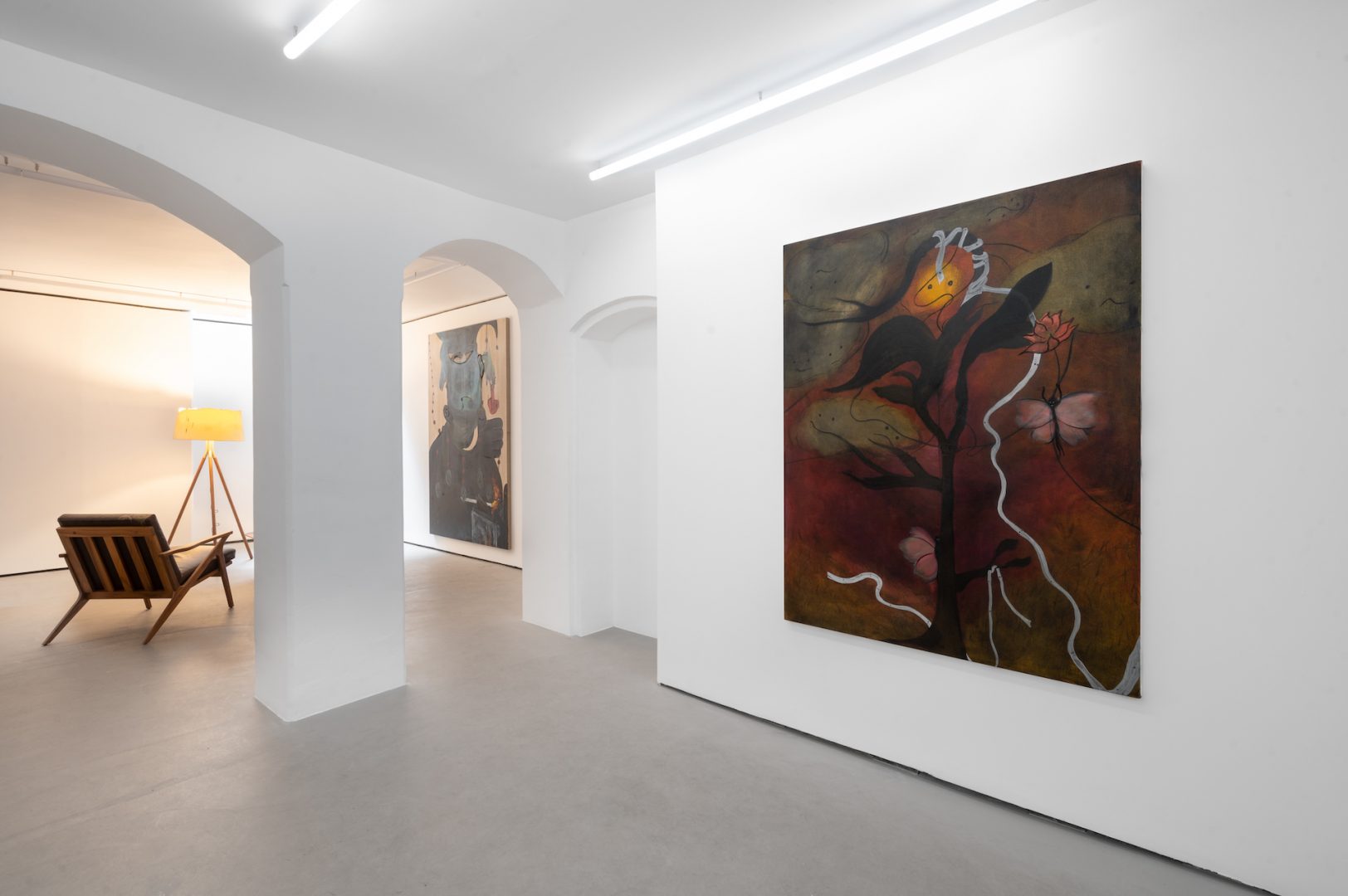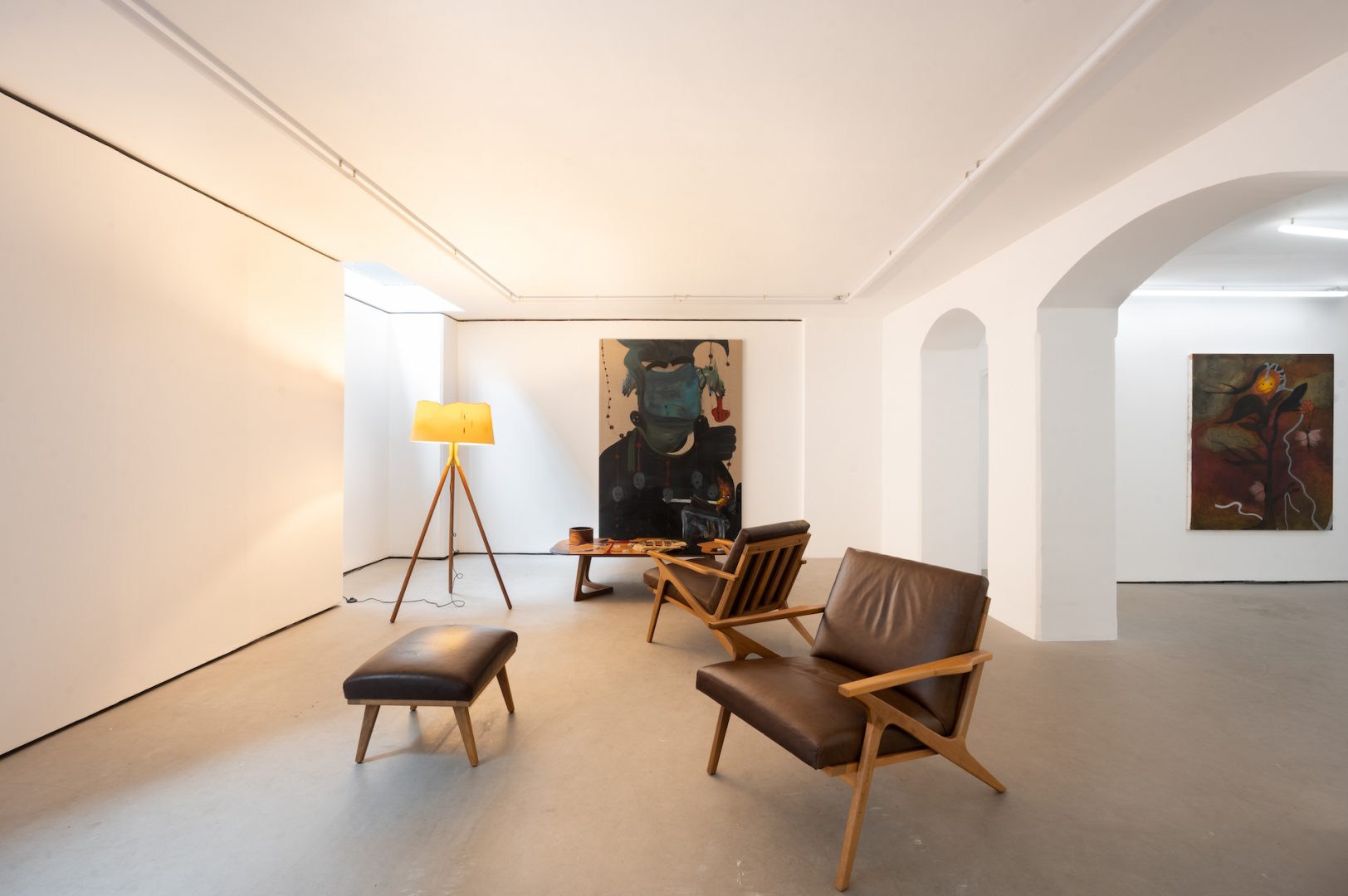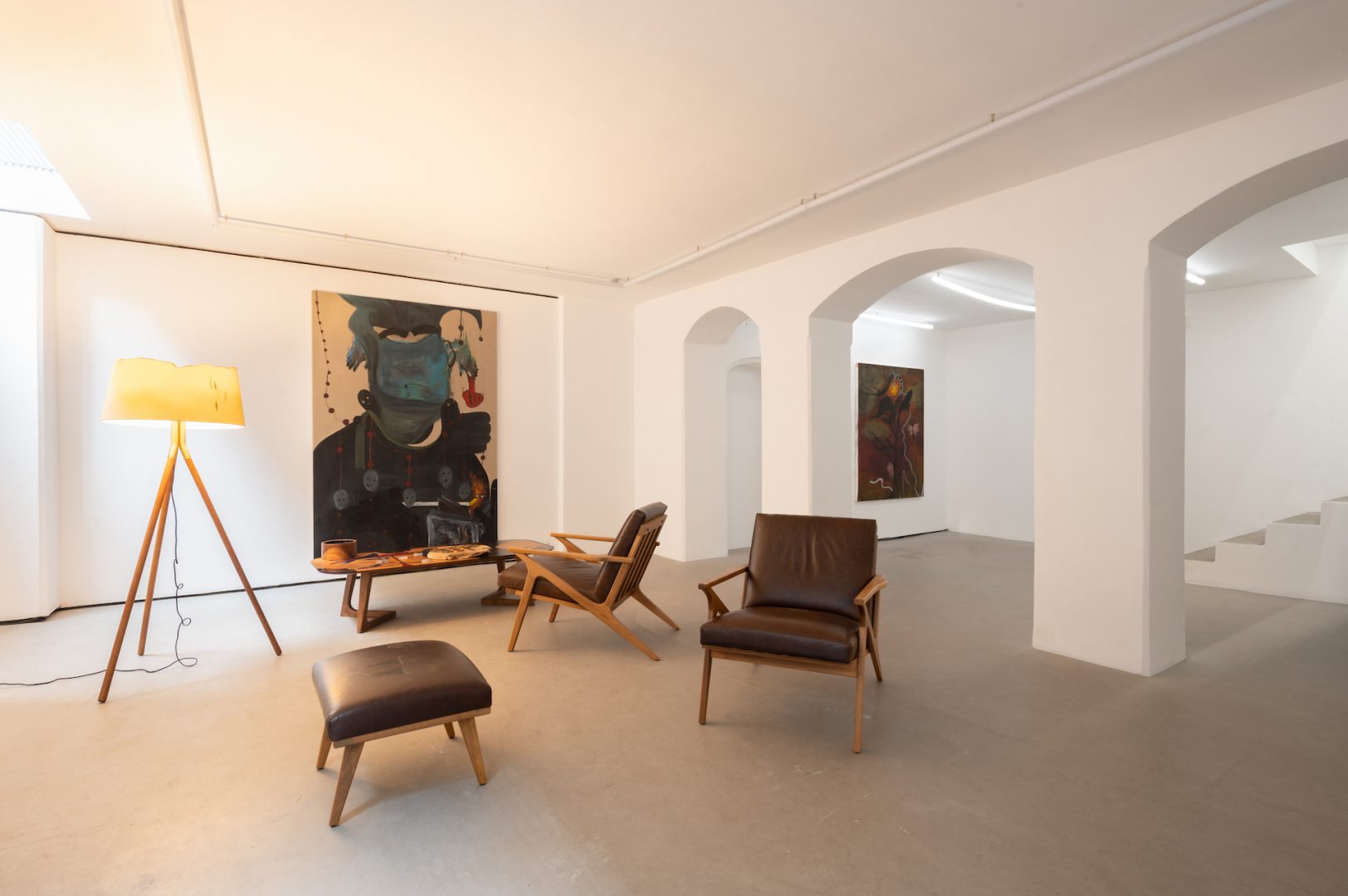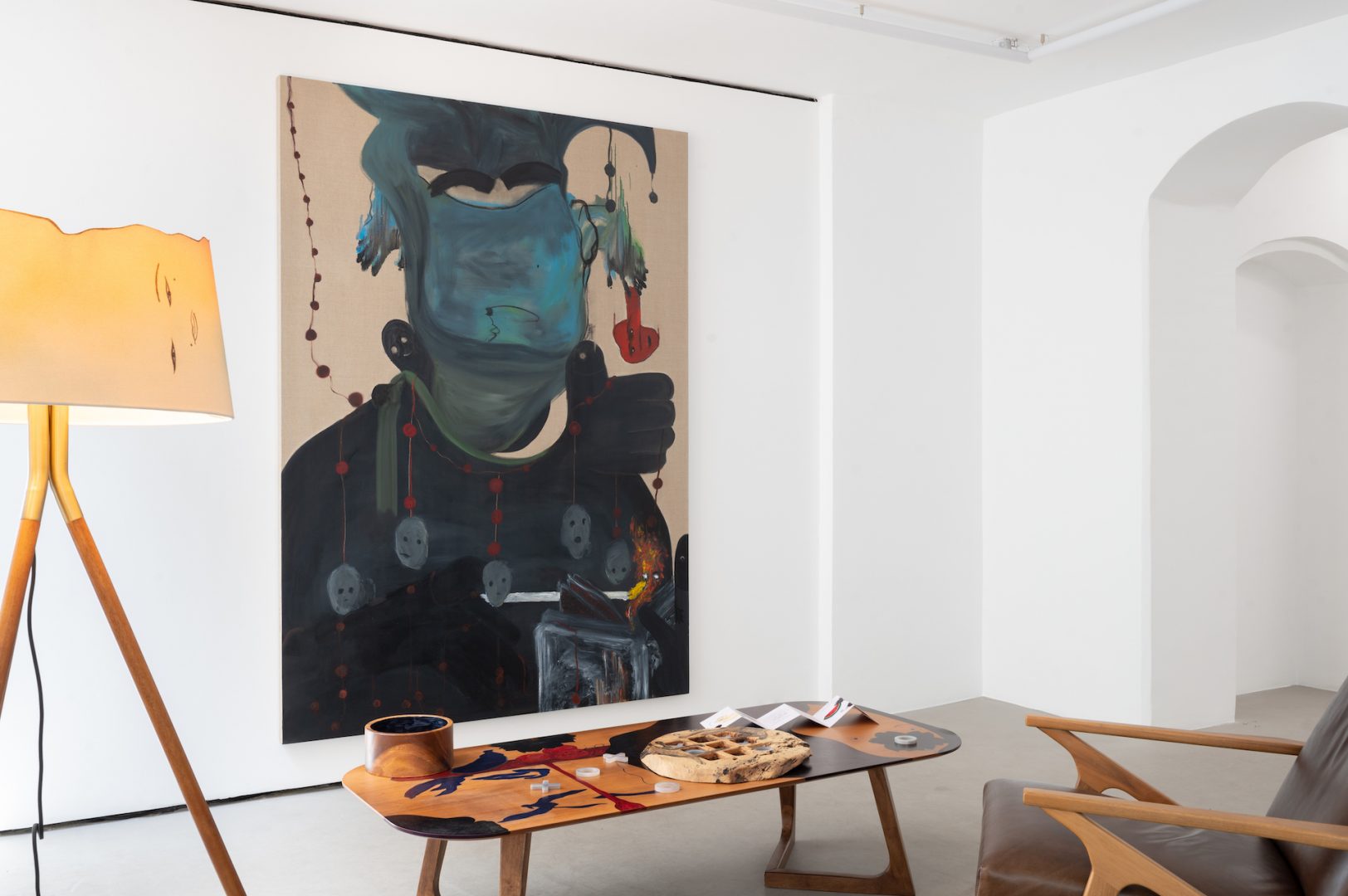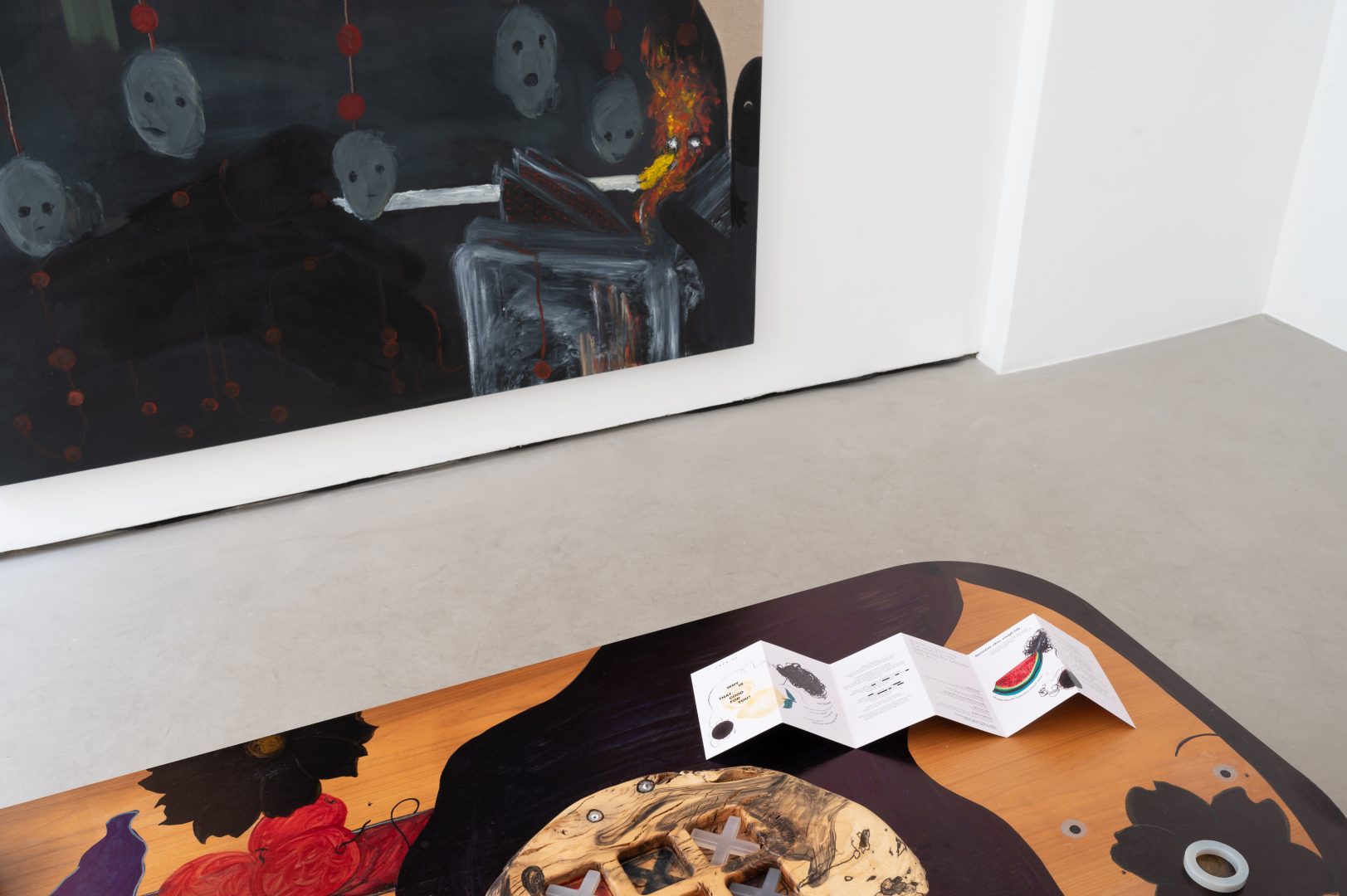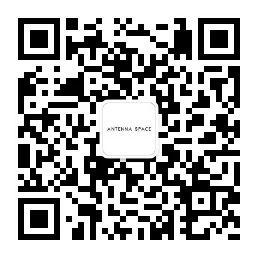2023.07.20-2023.09.09
Owen Fu | “Last Summer” @ Balice Hertling
Antenna Space is pleased to announce Last Summer, a solo exhibition by Owen Fu at Balice Hertling from July 20 to September 9, 2023.
We haven’t talked since last summer;
Mom says I told you,
Dad says let it go,
My brother asks me where your American dream has flown.
Owen Fu, 2023.
Fu discussed his practice with fellow artist Xinyi Cheng, exploring the relationship between intimacy and painting. The following is the full transcript of the conversation:
Xinyi Cheng: How do you typically begin the process of creating a painting? What’s your starting point?
Owen Fu: Usually, I begin directly on the canvas using charcoal.
X.C.: So you won’t make a sketch before you paint?
O.F.: No, I don’t. I usually create a rough draft directly on the canvas using charcoal.
X.C.: Wow, don’t you have the fear facing a blank canvas?
O.F.: That’s why I fill up the canvas.
X.C.: What do you mean by that?
O.F.: A blank canvas can be overwhelming and empty, so I use charcoal to sketch out a basic form first, even if it’s not exactly what I want to paint. It’s a way of making the canvas “dirty.”
X.C.: By “dirty,” you mean it’s not clean and flawless?
O.F.: Exactly. Charcoal mixed with pigments creates a dirty, dusty texture. Without using a fixative, the charcoal can easily smudge or fall off with even a slight shake.
X.C.: If the initial draft doesn’t turn out the way you want, do you just wipe it off and start over?
O.F.: If I’m completely unhappy with it, I wipe it all off with a rag. Then the canvas turns grey, and I leave a few lines as a guide to sketch it again using charcoal.
X.C.: When you start a painting, what is your initial inspiration? Is it an image in your mind, a feeling, or an emotion?
O.F.: When I begin a painting, I first decide what I want to paint. It could be a picture in mind, a reflection of myself in the mirror, an old photograph, or simply my desire to paint grass or flowers that day. I start by defining my subject matter. For instance, if I choose to paint a cactus, I begin by outlining its form and then develop the overall composition. I consider whether the cactus grows in the soil or resides in a pot. I sketch the shape of the pot. Does it sit on a table or in a void space? I then outline the shape of the space. As I progress, I contemplate whether the setting is indoors. If so, I envision the presence of light and its source. I imagine the shape of the light and the resulting shadows, considering warm and bright areas versus dark ones. Gradually, I fill in the details, gradually building up the picture.
X.C.: This thought process unfolds directly on the canvas, correct?
O.F.: Yes, it all happens directly on the canvas. It’s a continuous process of trial and error, where I experiment with my artistic vision. If I’m unsatisfied with the table, I wipe it away and transform it into a flowerpot. If I’m not happy with the lamp, I paint over it. The beauty of oil paint lies in its layering capabilities. Even when covered, the underlying layers contribute to the sense of depth, making the picture more complete.
X.C.: Do you scrape off layers if the paint becomes too thick?
O.F.: No, because if you’ve seen my paintings, you’d know that I use quite thin layers of paint. The colors in each of my paintings are delicate. When one layer is applied over another, the colors beneath still shine through, creating a spatial and textural layering effect.
X.C.: I would like to ask you what your daily schedule is like? And how does it affect you? Do you only do creative-related things when you’re in the studio?
O.F.: Not exactly. Typically, I read books at home, but when it comes to art- related literature, I prefer to be in the studio. I’m accustomed to working in the evenings, starting from 6 or 8 PM after dinner and continuing until around 2 or 3 AM. During that time, the lighting remains consistent. The lighting in my studio is rather chaotic with a mix of interior lights and sunlight from the windows. However, at night, the light is stable, allowing me to maintain consistency in my paintings. Sometimes, when I place my paintings in a gallery setting, I notice they appear different from what I saw in the studio. The lighting may be less soft, and the lines may seem less supple, which brings a unique sense of novelty and surprise.
X.C.: Do you visit the studio during the daytime to examine your paintings under natural light?
O.F.: Yes, occasionally during the day, I visit the studio to read or simply gaze at my paintings. Sometimes, I feel compelled to add a brushstroke or make minor adjustments, and then I return to my books. For me, all paintings are unfinished while they remain in the studio; they only reach completion when they leave. Sometimes, before sending them away or after photographing them, I’ll add a stroke or two, usually focusing on details or making small changes. However, there are instances where the more changes I make, the further I deviate from the intended outcome, and the painting becomes increasingly complex. It transitions from a state of completion back to an unfinished state. I must navigate the process of trial and error step by step to ultimately achieve a different kind of completion.
X.C.: When this happens, do you ever feel scared? What emotions do you experience?
O.F.: I don’t feel scared, but sometimes I do get frustrated. It happens when a painting is already good, just missing a little something. However, due to constant revisions, it slowly deviates from where I intended it to go and never returns. It ends up in a new place.
X.C.: What do you do when this happens?
O.F.: I have to accept it. I can never recreate an exact copy of that painting. If the moment I desired has passed, I can only accept that it has reached another finished state that I am satisfied with.
X.C.: Do you feel any regret?
O.F.: I might feel a slight sense of disappointment or regret. However, I have a habit of photographing my paintings at each stage. So I capture the painting in that moment as if it were one of my finished artworks.
X.C.: Do you ever experience moments of hesitation about whether to make changes to a painting? Do you feel the risk of losing everything you have achieved? Is this struggle painful for you?
O.F.: It’s not painful for me because I make decisions on impulse. If I feel the need to change something, I will. I might realize later that it was the wrong change, but if the canvas is already completely monotonous, I can slowly revert it back if I’ve made a mistake. I enjoy the process of revision. It’s a trial-and-error process. The picture may not end up exactly the same, but it’s a way of getting back to the previous state. I take my time with each painting, allowing them to dry thoroughly. I want each layer of texture to be in a state that is ready to be reshaped, so I can return to the previous step.
X.C.: When I look at your paintings, I get the impression that all the brush strokes and the way they go, there is a very rapid feeling of randomness and immediacy when you are painting. And I think you would not want your picture to look labored or carved, which seems particularly difficult to me. But you were talking about a slow process, which seems a bit different from my assumption. So I want to ask you, how do you envisage your ideal presentation of the picture? For the texture and brushwork of the painting, do you attempt to do it in one go?
O.F.: It’s like you have to work hard to show that you’ve done it effortlessly. Those completely effortless lines are not actually drawn in one go. Sometimes, I draw nearly 20 or 30 lines effortlessly to finally create the one line I want. The remaining lines are still there, just covered up so they can’t be seen. But that doesn’t mean they didn’t exist. The lines that appear as casual strokes, the lines that wrap around a figure, the lines that connect light sources and create light, the lines representing troubled thoughts—all are the result of repeated friction. They may appear easy, but they are lines condensed from countless twisted thoughts and drawn with great effort. I don’t want people to notice the effort; I want them to appear effortless. The surface I strive for is similar. It’s a state where the oil paint gently adheres to the canvas. This lightness doesn’t imply the use of a single color. For example, I start with a thin layer of blue, followed by a thin layer of red on top of the blue, then some thin yellow on top of the red, and finally, a thin layer of black to cover them all.
X.C.: I find your color palette very tasteful, especially the black.
O.F.: The black isn’t initially black; it’s built up by layering multiple colors beneath it. The reflection of black varies in different areas of each painting, and that’s the beauty of oil paint. That’s why I’m not particularly fond of using acrylics. Oil paint has more transparency and a sense of layering. All the mistakes made in the past, all the steps taken, all the creative processes, manifest as layers on the canvas. Even if I try to cover them all up with black, upon closer inspection, they’re still there. The state I aim to achieve is like layers of gauze gradually coming together to form a piece of fabric. It’s a colorful fabric, woven and dyed in layers, textured and patterned. I am like a printer, applying one color at a time and layering them to create the final image I desire.
X.C.: I noticed that a lot of your recent paintings are in dark colors and have a light bulb or a colored light in the picture with lots of lines, can you tell me what their imagery are?
O.F.: The theme of this exhibition is “Last Summer,” or “剩夏“, in my translation, “The leftover of Summer.” It represents the emotions I experienced during a trip with a friend last summer. The trip itself was enjoyable, but the period leading up to it was not. This friend was also my neighbor and landlord, and the last two years of our four-year cohabitation were difficult for both of us, clouding our relationship. We decided to go on a holiday to Italy, a sunny country. During the trip, we made an effort to be happy, and we did have a lot of fun. However, beneath the happiness of our sun-drenched journey lay the unshakeable cloud of our troubled relationship. Even when covered with vibrant colors, that layer of darkness remained. After the trip, I moved away, and we haven’t spoken in almost six months—we no longer keep in touch. The experiences from that trip are reflected in the works of this exhibition. The dark colors represent my feelings during that time. Even in a bright environment, if the heart is shrouded in thick fog, the colors we perceive become muted and somber.
But I also encountered many pleasant things during the trip, so I painted elements unique to southern Italy—fruits, summer moods, flowers, swimming pools, and various experiences I had. For example, I discovered that every gas station in Italy offers freshly squeezed orange juice, which became a ritual for us. We ordered glasses of fresh orange juice at each stop and drank them together. That’s why one of the paintings is titled “Succo d’arancia,” which means “Freshly squeezed orange juice” in Italian. Additionally, when people think of Italian desserts, they often mention cheese, tiramisu, panna cotta, and so on. However, in the south, they have a dessert called “Cocomero,” which simply translates to the world “watermelon”. Watermelon is considered a dessert there. So, after dinner, I frequently ordered watermelon as my dessert. It was an interesting experience, which inspired the painting “Semi di Cocomero,” meaning “Watermelon Seeds.”
X.C.: Didn’t you mention that watermelon is associated with jealousy?
O.F.: Yes, the connection between watermelon and jealousy emerged when I painted a watercolor drawing after finishing this exhibition. It depicts a fresh watermelon entangled in a mass of black, hair-like strands—an expression of jealousy, I believe. However, it’s not solely about jealousy. When you asked about the threads in my exhibition, I refer to them as “thoughts,” threads of thought. These tiny threads seem to float around, and when you try to break them, they sway with the movement of your hand. They can’t be untied or shaken off, much like spider silk sticking to your hand or dust floating in the air. They are always present. As different thoughts intertwine and grow thicker, the lines expand, forming a strip of cloth that wraps around you. The painting of the two angels you see, “L’Angelo del Notte” and “L’Angelo del Sole”, draped in red and blue respectively, with strips of cloth resembling curtains, represents these lines composed of various thoughts.
X.C.: I wondered each time you draw a light bulb, do they all have eyes and mouths? How did you decide?
O.F.: The presence of eyes and mouths on the light bulbs depends on my thoughts at that particular time. The so-called eyes are actually two tiny beams of light emitted by the light bulb. It’s a bulb with minimal power, casting only a faint glow with two small dots of light. These two light dots, resembling eyes, are the actual sources of light. There are often black holes in my paintings that might appear like eyes, but they are not. They are empty voids, never to be filled. At times, I illuminate myself using the two little beams of light to brighten the colors in the painting or uplift my own mood. The black holes, seemingly impulsive eyes, and the two light dots, resembling hopeful eyes, symbolize this dynamic. Additionally, the two filaments in the bulb, tangled together, represent two individuals or a twisted relationship, forever intertwined.
X.C.: Typically, there is only one figure in your paintings, and that figure resembles yourself. Regarding the relationship between Owen Fu and 傅强, is Owen Fu a character or an alter ego? How would you describe it?
O.F.: Owen Fu is like a character I’ve created.
X.C.: So, the person who resembles you in the paintings is Owen Fu, right?
O.F.: Yes, the figure resembling me in these paintings is a self-portrait of Owen Fu. However, it may not encompass the entirety of Owen Fu. Owen Fu stands before 傅强. Personally, I consider my paintings to be sincere and exposed, but sometimes I feel the need to shield myself by being so vulnerable. So, I tell everyone that it’s all about Owen’s story, which is slightly distinct from me as an artist. While everything is based on real experiences, they may have been manipulated or imagined. For me, all my paintings are self-portraits. Yet, the definition of a self-portrait extends beyond a mere depiction of oneself. My perspective is that everything around me belongs to me, my experiences belong to me, and by painting them, they become part of my self-portrait. The tables and chairs I’ve lived with for years, which have witnessed and absorbed my life, bear my imprints and have become part of me. It’s not merely anthropomorphizing objects; I feel that I extend myself into the space and the objects I use, and they become a part of me or were once a part of me. Each of my works represents a fragment of myself, presented through the unique image of Owen Fu. It’s an ongoing process of patchwork. Each painting, each object carries a piece of me, and together, they form the many facets of Owen Fu. However, behind Owen Fu, it’s still me. That’s the relationship.
X.C.: So, as an artist, are you Owen Fu or 傅强?
O.F.: Owen is a persona I have created, representing myself as an artist.
X.C.: You mentioned furniture earlier. What’s the biggest difference for you between painting furniture and regular painting?
O.F.: Actually, I don’t see it as painting the furniture itself; it’s more about using it as a different medium to present my oil paintings. However, the approach to painting on furniture may differ slightly from traditional painting. As we discussed before, facing a blank canvas can be intimidating. On the other hand, furniture is always in use. Sometimes I place books or plants on it near the window, where sunlight can leave stains, cause fading, or maintain the original colors. As I begin to paint, I imagine what should be on top of these pieces of furniture. For example, I visualize fruits and then proceed to paint them. However, I don’t sketch the fruit in its typical form. Instead, I sketch it based on the fading caused by the sun and the aging of the furniture’s surface. The furniture already possesses its own form and imprint. Through my long-term usage, the sun has left faded patches, scratches, and folds in the leather, which become the foundation for my creative process. In my previous exhibition, the faded carpet served as a guide, where I sketched out the forms I envisioned. I believe that these forms have always existed; I merely highlight them, extracting the hidden figures within the carpets and furniture.
X.C.: So how did you decide that the painting on the furniture was finished? Is that what your gut is telling you?
O.F.: Creating artwork on furniture is a more straightforward process for me. I start with the idea of creating something based on the furniture’s existing texture. Since I have already left traces on the furniture and know where these traces are, I follow them while projecting my ideas onto it. In this way, I can find what I want to express. The furniture itself creates an entire space, which I call “Owen’s living room.” I have lived with this furniture for four or five years, and I have become intimately acquainted with it. Including the furniture in this exhibition adds a different medium and an intimate feel of a stranger’s living room. It may appear familiar, as if it belongs to everyone, but it is unfamiliar because it does not belong to you. However, I believe that many people have experienced similar emotions. We simply find different ways to process and express them. Therefore, it is not my personal experience that I aim to resonate with, but rather the emotions I felt at that time.
X.C.: What’s the difference for you between expressing emotions in this way and expressing them by painting? Do you get the same sense of accomplishment when the piece is established? Would you feel that painting would give you a greater sense of achievement?
O.F.: I would say that painting allows me more space to express my ideas, whereas creating art on furniture is more about summarizing my previous experiences. It might sound a bit abstract, but my paintings are visualizations of my immediate experiences, capturing emotions in the moment. On the other hand, working on furniture is a result of accumulated experiences over a long period of time, even before I started creating. The furniture has been part of my daily life, witnessing my various activities like watching TV, reading books, making phone calls, even moments of vulnerability like crying. It’s a culmination of these experiences, resulting in a feeling of déjà vu that is hard to comprehend after long-term accumulation. Painting feels more intuitive to me, like delivering a speech and telling my story. The furniture, on the other hand, serves as the setting and narrative framework for my story. They have always been there, like the backdrop of a scene.
X.C.: Are these furniture pieces titled?
O.F.: They share a common title, “Owen’s living-room.”
X.C.: In general, what fears do you have in painting? For me, I used to fear that my paintings would become too illustrative and decorative. Do you have any fears like that?
O.F.: My biggest fear in painting is repeating myself. Since I often paint self- portraits and depict myself, I’m afraid of painting the same face or repeating a fixed image. For instance, the light bulb you mentioned, I occasionally transform it into different forms. After a while, I try to change the subject matter or use colors that I don’t typically use. I don’t want to keep painting the same thing over and over again, but at the same time, I find myself using the same subject matter repeatedly, which is a contradiction. However, I struggle to paint other people. I honestly don’t know how to paint others. The only person I truly know is myself, and I can’t paint people without knowing them.
X.C.: But I’ve mentioned that I no longer fear repetition because you can never truly draw the same thing twice.
O.F.: Despite that, I still have that fear.
X.C.: Regarding self-portraits, have you discussed the relationship between 傅强 and Owen Fu in previous interviews?
O.F.: I have been asked this question many times, and I’ve discussed it to some extent. Owen Fu is not my real name; it’s a name I created for myself. By using this name, I feel a sense of control and freedom, without the burden of carrying on family names or legacies. It allows me to be more uninhibited and express eroticism more easily.
X.C.: I understand. I’ve noticed that your paintings often contain narrative elements. What role do these narratives play for you? Because without explanation, people might not realize that you’re painting erotic scenes. Is it important to you to be understood?
O.F.: Even without explanations, people naturally sense the eroticism in my paintings. They may not precisely understand what is depicted, but they can grasp the general subject matter. Narration plays a significant role for me. Although I keep saying that my paintings lack a story, in reality, I’m telling my story indirectly. I aim to express everything in my mind, but it doesn’t necessarily require complete understanding. Therefore, the form of creation is not direct; I don’t use metaphors. I paint in the state I’m in or in the direction I desire. For instance, the cactus with thorns removed represents an inability to become aroused. It’s not an instantly understandable story, but many people can feel the eroticism in that painting when they see it. Another example is a painting of a watermelon with a hollow black hole in the center and a floating knife above it— a very carnal painting. Although people might not grasp the exact meaning through subjective feelings, they can feel the eroticism within it.
X.C.: I really admire your handling of the background in this painting, and I’m excited to see the original.
O.F.: Are you referring to this small watermelon painting?
X.C.: Yes, the background of the watermelon.
O.F.: The background is actually more subtle than you imagine. It’s just a blend of white canvas and the soft pink of the watermelon. Afterward, I wiped away much of it with a rag, leaving behind the color that resembles the skin. It’s like the reddened skin you get after rubbing it with a towel. For me, each canvas carries its own texture and develops unique scars from repeated rubbing. The background of this painting bears the marks of intense rubbing with red paint, creating the impression of skin-like texture and permeable fruit juice. It’s fleshy and sweet.
Small Talks
X.C.: One more question, who’s your favorite artist? Just a casual chat.
O.F.: Favorite? That’s a bit difficult to answer. Let me think for a while…
X.C.: Or have you ever seen someone’s work that inspired you to create?
O.F.: Yes, it happens a lot. I have some favorite artists, but if I had to choose one, it would be Robert Gober.
O.F.: How have you been lately?
X.C.: I’m doing well, I’ve been drawing.
O.F.: So you’ve let go of the fear of repetition and you’re no longer afraid? Or did you never experience that phase?
X.C.: I’ve been there, I’ve had moments where I’ve had a strong desire not to repeat myself. But now I have the feeling that there are not that many things that you are really passionate about in your life, and there are even less things that you are passionate about being good at at the same time. Even if you intend to do the same thing, you won’t end up with the same result if you do it bravely with all your heart. So I’m trying to reconcile with it now. And I think it can be a good challenge to paint new versions under the same subject, or even the same composition.
O.F.: After all, we can’t paint so many in a lifetime.
X.C.: Hmmm, we can actually create quite a lot, depending on how long we live.
O.F.: But when you consider the art history, even Picasso had only three or four thousand works. In the grand scheme of things, it’s not that many.
X.C.: The fear will still be there more or less, but I think it’s important not to be afraid. Then it was really Munch who made me get rid of this mental load. He was doing repetitions all the time, he painted over and over and over again what he had painted twenty years ago. So I think it’s ok.
O.F.: The reason for my fear of repetition may be slightly different. I don’t want to lose interest in myself. I want to maintain that urge and interest in my own creations. That’s why I avoid repeating things that bore me in relation to myself.
X.C.: This is quite subtle.
O.F.: Yes, it’s not just about repeating subject matter; it’s about avoiding becoming bored with my own life. Because it’s not just my artwork or creation; it’s also my real life.
O.F.: So I’ve been contemplating a move lately, and I’m considering moving to New York.
X.C.: That’s a great idea, New York can give you more impacts, you may feel happier.
O.F.: I’ve lived in New York before, but I’m thinking about experiencing the city as it is today. When I lived there previously, I was just a kid. Now, I feel like I’ve grown up a bit.
X.C.: So you’re a man now?
O.F.: I’m still a young person. I was a boy before, but now I see myself as a youth.
X.C.: In your paintings, do you consider the character “Owen Fu” to be a boy or a youth?
O.F.: I’ve been reflecting on my old works recently, and there’s one piece “Panic” currently showing in Hammer Museum. The Owen Fu in that painting was portrayed as a carefree boy, wearing a distressed expression but without real worries. However, now I realize that life does bring actual troubles. I may have matured at a slower pace, but I’m now facing real-life challenges: such as the trade-off of living abroad away from aging parents and the complexities of friendships. I have grown up a bit, but I don’t want to fully embrace the weight of maturity just yet. So, for now, I remain in the youth stage to see how long it can last.
X.C.: I understand. ❤
X.C.: Do you think all the emotions depicted in your paintings are negative emotions? Do you ever paint happiness?
O.F.: Not really, I rarely paint happiness because I don’t feel compelled to create or express myself when I’m happy. It’s similar to how people don’t feel the need to post on social media when they’re truly enjoying themselves. They’re fully immersed in the moment. So, only unhappy emotions find their way into my art.
Even though some of my paintings may make people laugh, it’s often a self- deprecating humor. It’s not a pure sense of joy; it carries a darker undertone. It’s like how comedians sometimes make people laugh by hurting themselves or others. It’s not like your paintings—some of them emanate genuine happiness. My current favorite of your works is the one depicting two people hugging. I use it as a meme all the time. It’s just a face and the back of a head, two people embracing, but it gives a comforting feeling.
X.C.: I was actually going to ask you about humor, but I thought it might be difficult to explain.
O.F.: My humor stems from self-mockery, which often carries some dark, negative emotions within it.
X.C.: Is it Owen Fu’s self-mockery from Owen Fu, or is it 傅强’s self- mockery from Owen Fu?
O.F.: It’s Owen Fu’s self-mockery from 傅强—myself. I feel that he lives too freely.
X.C.: Well, I think the insights you’ve shared are brilliant. Thank you so much.
O.F.: Thank you very much.
Translated from Chinese by Liu Lingxi
Courtesy the artists and Balice Hertling, Paris
Installation Views
Artworks
-
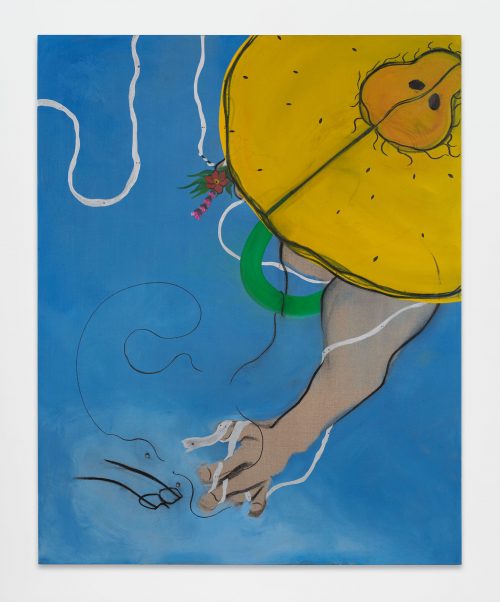
Owen Fu, Last Summer, 2023
Oil on linen
152 x 122 cm作品信息Information -
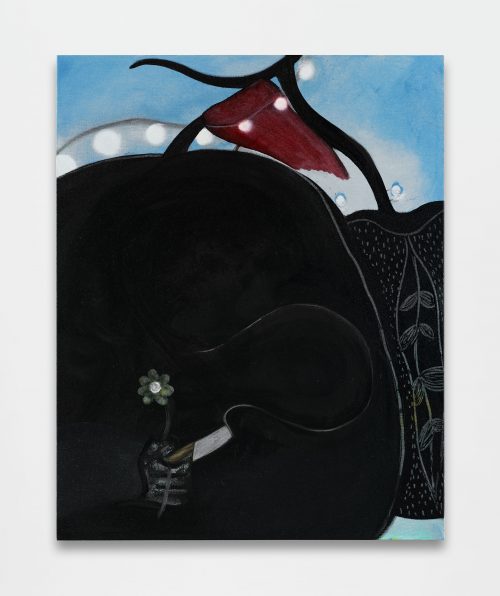
Owen Fu, Untitled, 2023
Oil on canvas
76 x 61 cm作品信息Information -
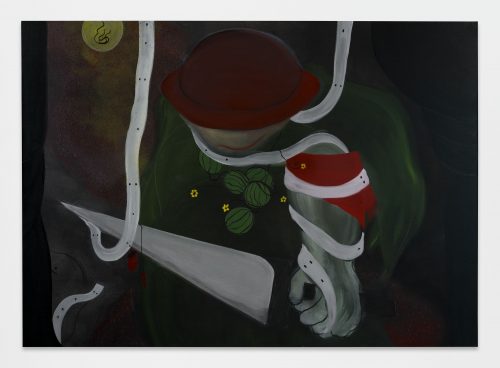
Owen Fu, Midnight Confession, 2023
Oil on linen
152 x 213 cm作品信息Information -
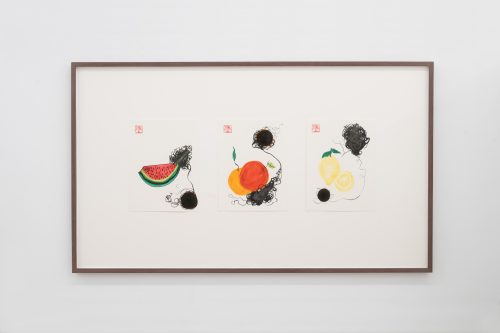
Owen Fu, Why is that good for you, 2023
Oil on paper
Triptych, 96 x 66 cm each作品信息Information -
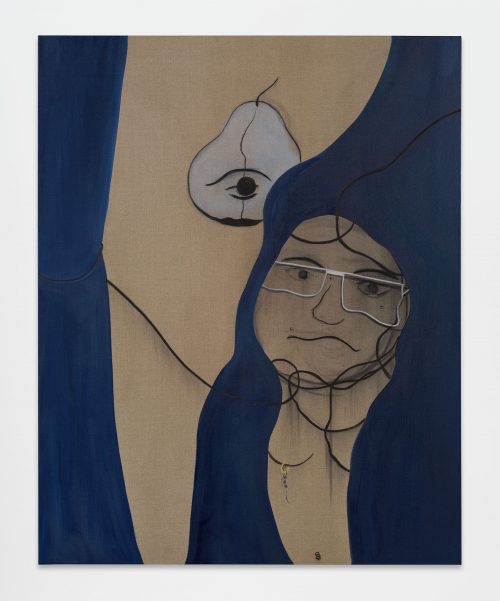
Owen Fu, L’Angelo del Notte, 2023
Oil on linen
152 x 122 cm作品信息Information -
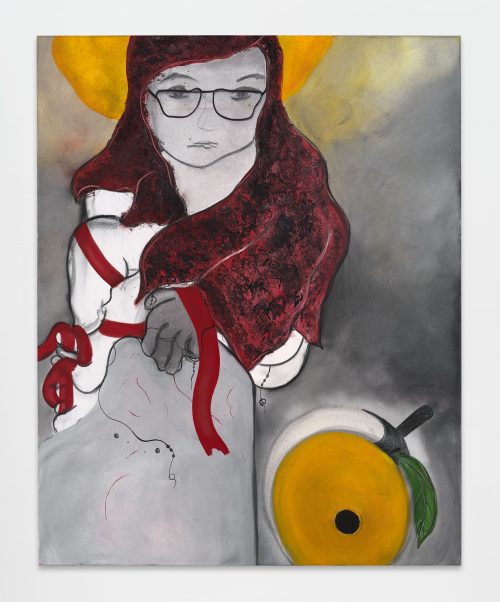
Owen Fu, L’Angelo del Sole, 2023
Oil on canvas
152 x 122 cm作品信息Information -
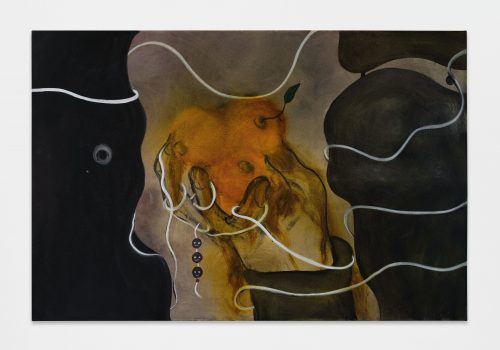
Owen Fu, Succo d’arancia, 2023
Oil on canvas
102 x 152 cm作品信息Information -

Owen Fu, Chant, 2021
Oil on linen
213 x 152 cm作品信息Information
